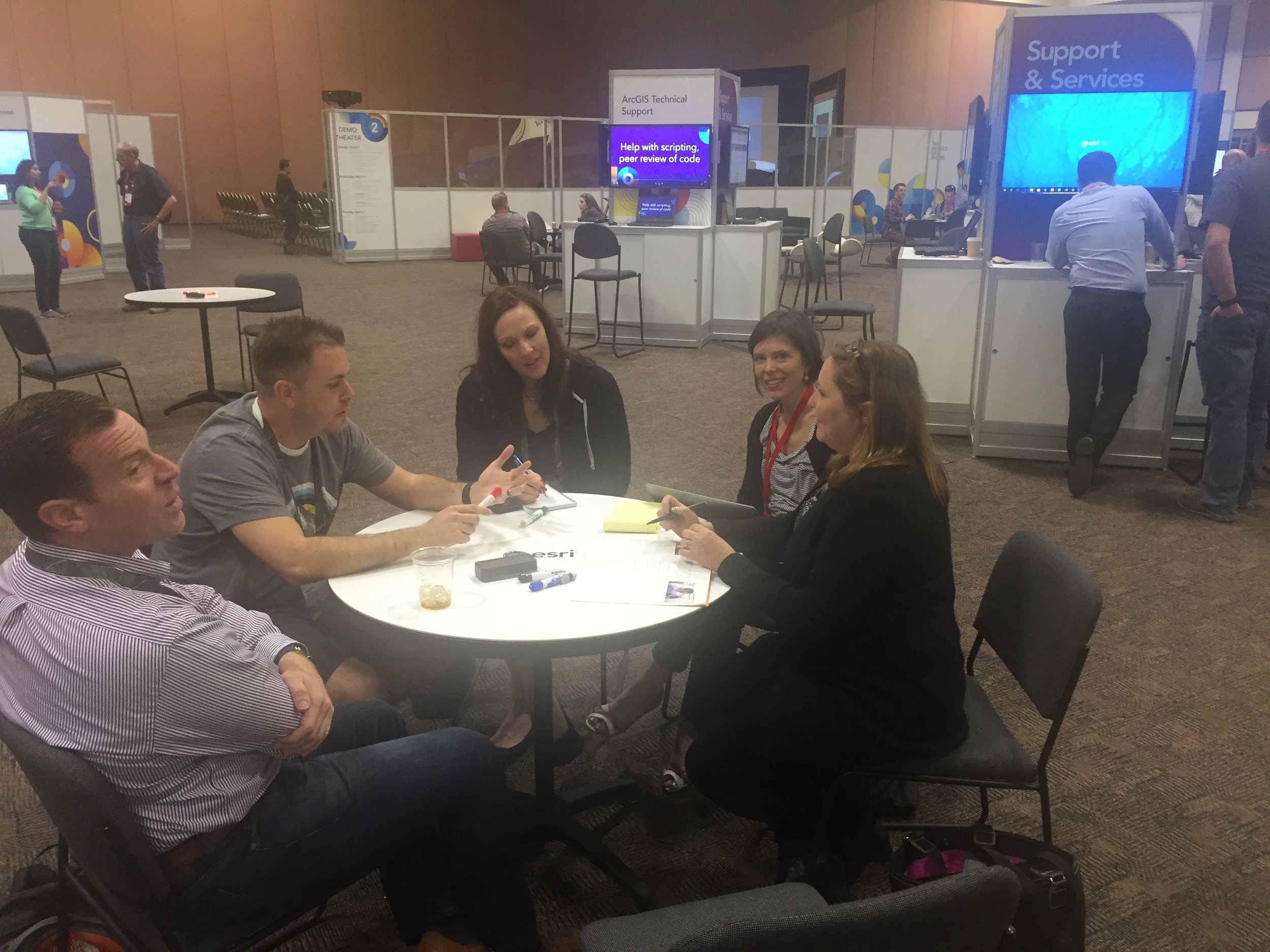2017 Esri® DevSummit Highlights
/DevSummit is cool. It’s like the Consumer Electronics Show in Las Vegas, Nevada, only for GIS geeks, with unexpected cool toys hiding in the corners. As a GeoDecisions representative during this year’s Esri Developer Summit in Palm Spring, California, from March 7-10, I experienced the latest generation of Esri’s developer tools in the big ballroom. In the smaller conference rooms, I had a blast watching folks present less mainstream projects that push the boundaries of what GIS tech can do.
ArcGIS for Server is now ArcGIS Enterprise
The platform has been rebranded. The base install of ArcGIS Enterprise contains all four components: ArcGIS Server, Portal for ArcGIS, ArcGIS Data Store and ArcGIS Web Adaptor. When you install ArcGIS Enterprise on a new physical server, virtual server, or in the cloud (Amazon Web Services or Microsoft Azure), you choose a role for the server based on your needs and licensing. Server roles include:
ArcGIS Server
ArcGIS Image Server
ArcGIS GeoAnalytics Server
ArcGIS GeoEvent Server
Esri Business Analyst Server
See more details on the ArcGIS Enterprise website.
Insights for ArcGIS is ready for prime time
First released with ArcGIS 10.5 in December 2016, Insights 1.1 was released just before the DevSummit. Insights is a web-based spatial business intelligence tool. In your web browser, you create Insights “cards” that contain maps, charts, or tables of data from almost any data source. Cards are linked together, and as you zoom in on a map, the corresponding charts and tables adjust to match.
Insights workbooks are highly interactive, not static PDFs or printouts. Insights is an end-user tool, and does not require any programming or specialized GIS analytical knowledge to use. It brings geographic analysis to a much broader audience than Esri’s high-end ArcGIS for Desktop or Web AppBuilder for ArcGIS. Insights is deployed on your organization’s internal or hosted ArcGIS Enterprise instance. It is not yet available for ArcGIS Online.
See here for more details: http://www.esri.com/products/arcgis-capabilities/insights
GeoAnalytics Server enables big data analysis
Also new with ArcGIS 10.5, ArcGIS GeoAnalytics Server allows users to run spatial analytics against massive collections of data in a scalable manner. ArcGIS GeoAnalytics Server uses distributed processing to send queries and algorithms to your data rather than pulling your data over the network to a single place for analysis. With traditional spatial analytics methodologies, that single place can be a bottleneck. ArcGIS GeoAnalytics Server’s Big Data approach distributes to the load to many different data nodes, enabling spatial analysis of huge data sources including HDFS, Hive, and ArcGIS Spatiotemporal Big Data Store (BDS). ArcGIS GeoAnalytics Server is deployed on your organization’s internal or hosted ArcGIS Enterprise instance. Due to the data volumes involved, there are no plans to make it available for ArcGIS Online.
Click the link for more details: http://www.esri.com/arcgis/products/geoanalytics-server
GIS Developers love to push boundaries
In these smaller, more experimental sessions, I learned:
How to use ArcGIS Local Server and the ArcGIS Runtime to generate Lord of the Rings-style fantasy maps, completely offline. Local Server can do significant GIS processing on a desktop or mobile client, without having to submit a job to a live ArcGIS Enterprise server.
How to hijack the ArcGIS API for JavaScript’s request pipeline to build web mapping apps that run completely offline. Web apps don’t normally work without an Internet connection. The presenters combined the ArcGIS API for JavaScript with the ArcGIS Runtime to build a web app that works even when your WiFi doesn’t.
You can answer geospatial questions with ambient bots, or “bots,” which are always on and a part of your environment, like Apple’s iPhone (Siri) or Amazon’s Echo (Alexa). The presenters showed how any developer can create apps to support natural language questions of their organization’s own spatial data.
The desert was in bloom
The unusually high winter rain and snowfall in California has deepened the snow pack, filled the reservoirs, and turned the brown mountains green. Even though daytime highs at the conference reached into the 80s and 90s, we could still see snow on the nearby mountain peaks.







